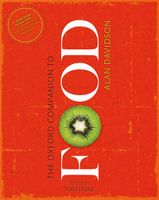Advertisement
Dough
Published 2014
Methods and relative proportions of ingredients used for making wheat-based doughs vary according to the desired product, encouraging or discouraging the development of gluten to give varied textures. See also bread chemistry. Bread dough is made with high-protein flour, leavened with yeast or sourdough, and kneaded with water to develop the gluten, yielding a characteristic spongy appearance and chewy texture. Gluten development is also encouraged in pasta and noodle dough, which is heavily kneaded but unleavened; these have a relatively low moisture content when fresh and are often dried to give compact, long-keeping foods. Pastry doughs, and those for shortbread-type biscuits and cakes, use soft flour, with a high proportion of shortening (fat), and are usually unleavened, giving a crisp, friable result.


